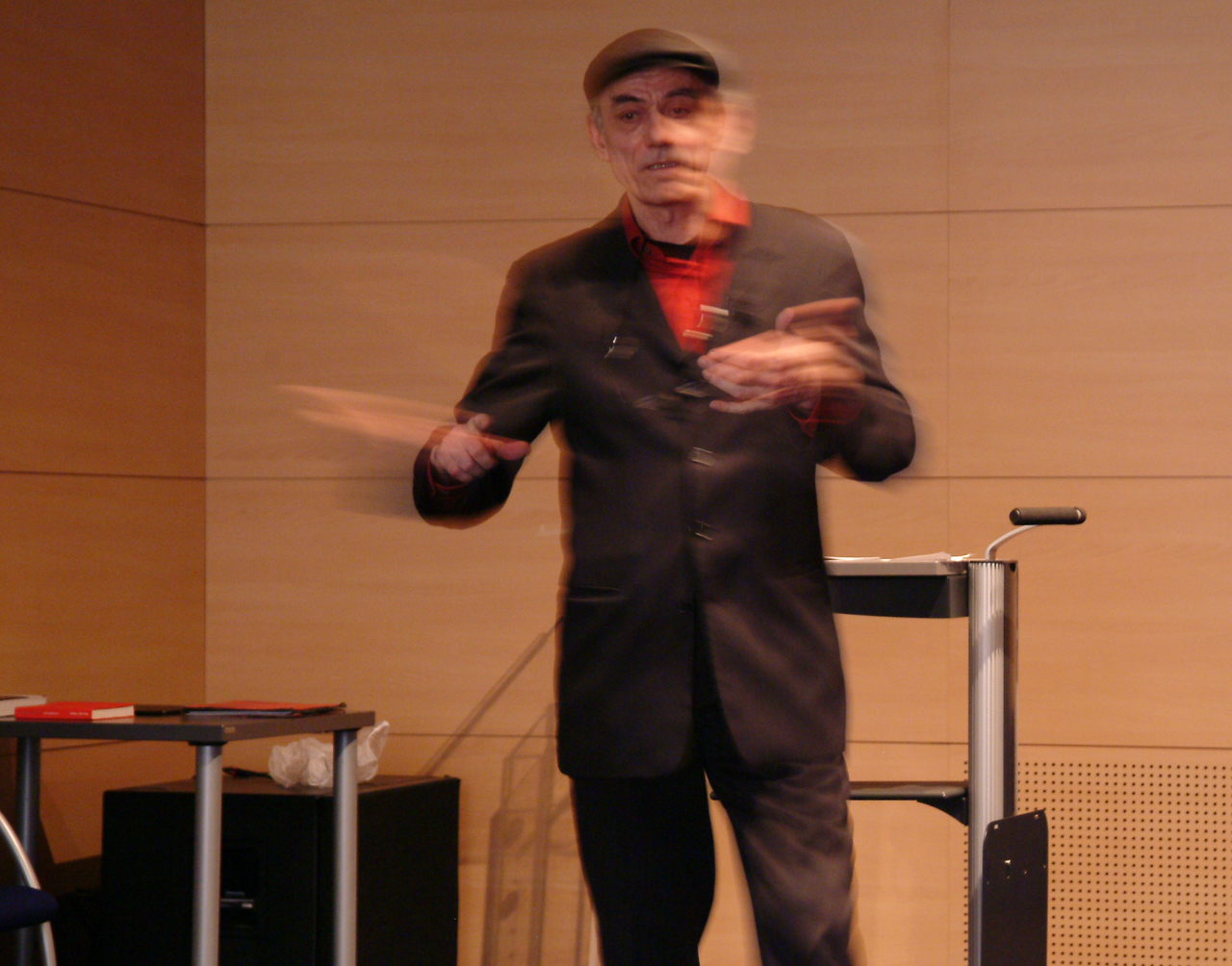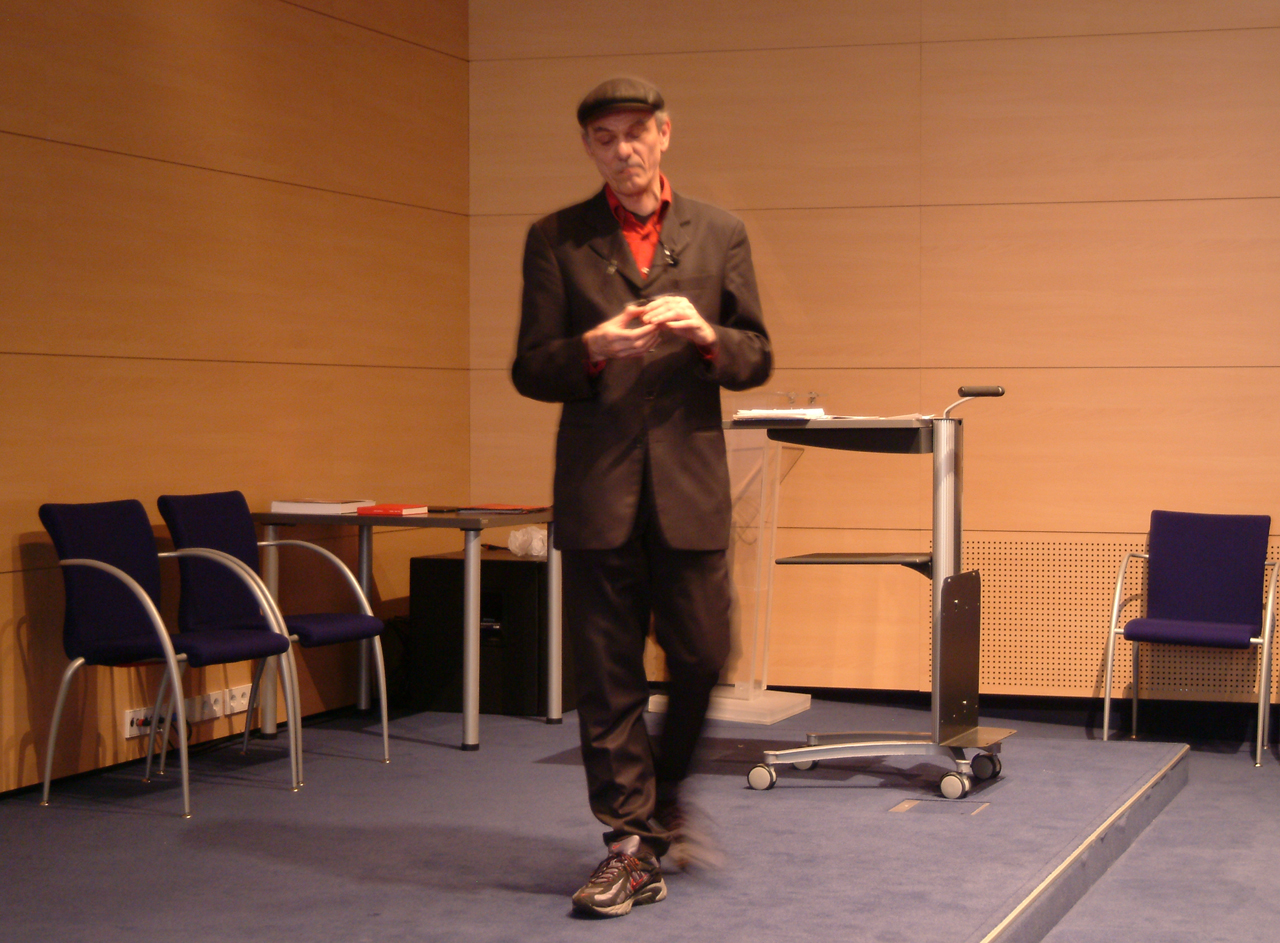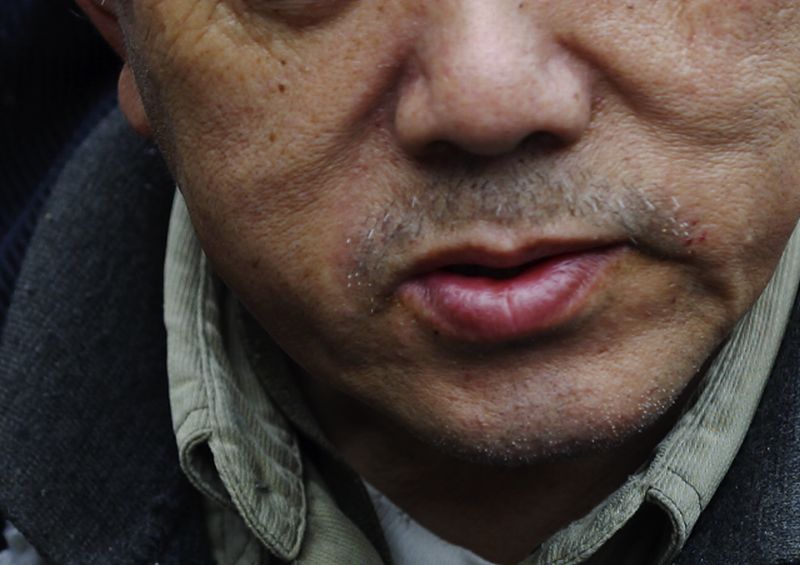Lecture and screening series
Films are selected by Gusztáv Hámos, Katja Pratschke and Thomas Tode
“I can no longer think what I want. The moving pictures have taken the place of my thoughts.” (Georg Duhamel: Scènes de la vie future, Paris 1930, p. 52)
Photographs have traditionally been considered as still images. Photography freezes movement, captures a moment. The medium film on the other hand has always been associated with movement and the organisation of time. By photofilms we understand films that essentially consist of photographs. Photographs put into a cinematic context create a filmic experience. Photofilms concentrate on the essentiality of the moment, but also tell something beyond the here and now. They experiment with the montage of text / sound and image, and reflect on the nature of cinema.
Photography is motionless in contrast to the moving images. Though movement in film is an illusion created by the quick succession of slightly changing still images, our perception of photography and film is fundamentally different. Photography isolates a moment out of the flow of events, allows us to study or even contemplate this moment as long as we like without stress and uninstructed by sound. Film on the other hand imposes its own temporal structure on the flow of events through montage, which also determines for how long we can linger on a shot or scene. A fast edit and hence a rapid succession of images may make us feel overwhelmed, possibly even stressed. And in addition to the flow of images before us there is sound, music, dialogue, and all sorts of noises. A photograph in turn is silent. It may have a caption but we can read it at our own discretion and choose to come up with our own interpretation of the photograph before we let the text delineate it for us.
But what happens with the photograph when it is put into a cinematic context? There have been a number of photographers and filmmakers who have chosen to create films essentially made up of photographs, to generate a kind of hybrid, which we call photofilm. No doubt one of the most famous examples is Chris Marker’s La Jetée, but other well known filmmakers such as Agnès Varda, Alain Resnais or Raul Ruiz have made photofilms.
In recent years younger artists have also increasingly chosen this film form attracted by greater immediacy and the possibilities it opens up for the direct realisation of ideas without having to co-ordinate a big film team. And finally, the hybridity of the medium, its multiple origins are also expressive of our time.
All programmes are introduced by Gusztáv Hámos
23.02.2008, 7.00–9.00 p.m.
The Filmic Photographic
Katja Pratschke and Gusztáv Hámos: Fremdkörper (2002)
Katja Pratschke and Gusztáv Hámos: Rien ne va plus (2005)
24.02.2008, 4.00–7.00 p.m.
How Much Movement Does the Image Need?
Sabine Höpfner: Hybrid and Superimposition (1997–1998)
Paul és Menno de Nooijer: Transformation by holding time (1976)
Silke Grossmann: The feelings of the eyes (1985–1987)
Dan Geesin és Esther Rot: The Garden (1999)
Shelly Silver: What I’m Looking for (2004)
2nd part
The Plasticity of the Moment
Sirkka-Liisa Konttinen: Writing in the sand (1991)
25.02.2008, 6.00–8.00
Recall and Memory
Hubert Fichte és Leonore Mau: The Fishmarket and the Fish (1968)
Thierry Knauff: Le Sphinx (1985)
Agnès Varda: Ulysse (1982)
Andrea von Straeten: Family Excursion (1933)
Franz Winzentsen: The Fitting (1938)
Esaias Baitel: The Zone (2003)
Sean Snyder: Casio, Seiko, Sheraton, Toyota, Mars (2004–2005)
Entrance fee: HUF600 Ft / day
Student ticket: HUF300 Ft / day
Partners: Concret Narrative Society e.V
Maintainer: OKM
Thanks for their professional help to German Films, AG Kurzfilm, Swedish Filminstitut and Inforg Stúdió



Related content
1–2–3: The Collection in Focus – 1st Floor Exhibition Space 16. November, 2007 – 27. January, 2008
This is the first time since the initial exhibitions of the Ludwig Museum in 1991 and the Museum of Contemporary Art in 1996 that the Museum’s own collection has been put in full focus: some three hundred of the five hundred items it holds will be on display on the three floors of the Museum.
